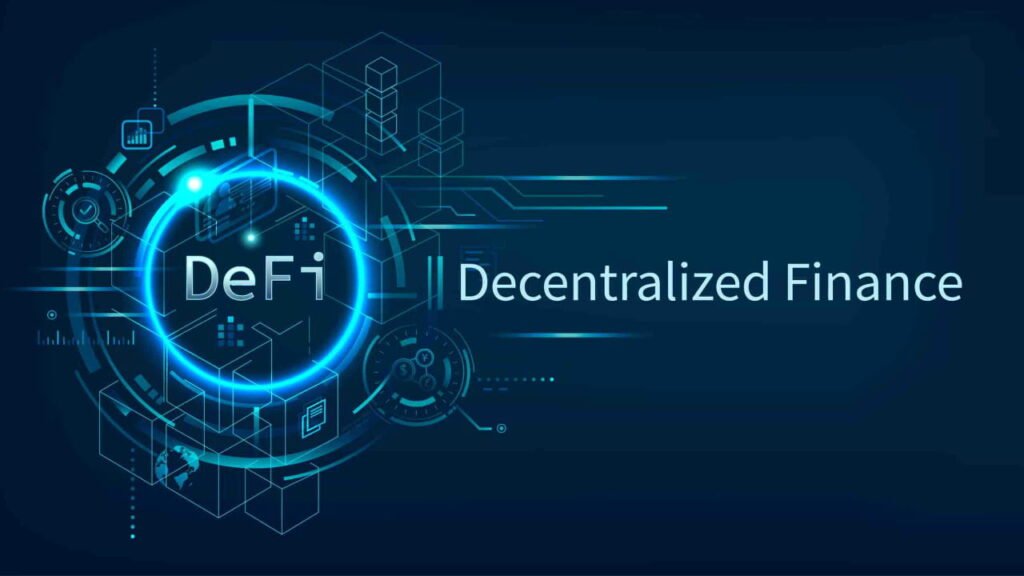Among the most fascinating and revolutionary developments in the financial industry in recent years is decentralized finance (DeFi). DeFi delivers financial services by removing the need for conventional middlemen—such as banks and insurance companies—through blockchain technology and smart contracts. Users may participate directly in lending, borrowing, trading, and investing.
However, as the DeFi ecosystem expands, its long-term viability begs concerns. Will it remain a high-risk innovation with little acceptance, or will it be the future of world finance?
Introduction to DeFi Systems
DeFi systems usually run on blockchain systems, such as Ethereum, which lets smart contracts automatically handle financial transactions. These self-enforcing agreements eliminate the requirement of intermediaries to supervise and approve transactions. With billions of dollars invested in different DeFi protocols, the total value locked (TVL) in DeFi projects has expanded significantly.

These distributed apps, or dApps, cover lending, borrowing, asset management, trading, insurance, and other financial services. Particularly for individuals in areas where access to financial institutions is restricted, they present a more inclusive substitute for conventional banking. Many view DeFi as the next big step in finance development, given its explosive expansion and innovations such as distributed exchanges (DEXs), liquidity mining, and yield farming.
Defi Financial Revolution
DeFi promises significant financial inclusion gains. Conventional financial systems may require a credit history or a bank account, which may be difficult or unavailable in some locations. DeFi provides financial services to anyone with an internet connection and a digital wallet, eliminating the need for economic infrastructure. This could provide access to loans, investments, and savings for billions of unbanked and underbanked individuals.
Transparency of DeFi is one of its main benefits. Blockchain technology tracks all transactions on a public ledger, making the process unchangeable and traceable. This guarantees that every transaction is publicly verifiable, helping combat fraud violating agreements depending on pre-programmed rules and thereby removing human mistakes and inefficiencies resulting from manual procedures; smart contracts improve this even more.
Eliminating middlemen also helps to eliminate expenses and reduce taxes substantially. Users can get financial items practically immediately instead of waiting for clearance from banks or other financial institutions.
challenges and Risks in Decentralized Finance
Blockchain technology is widely used in DeFi services and is not risk-free despite its security. The frailty of smart contracts is among the most critical issues. Developers build these agreements, which might have defects or weaknesses open to use by malevolent parties. Numerous well-publicized breaches and vulnerabilities in recent years have cost millions of dollars.

Furthermore, DeFi systems are prone to network congestion. Since public blockchains underlie these platforms, more users interacting with them will cause transactions to become slower and more costly. This builds a bottleneck that can compromise DeFi systems’ scalability and efficiency.
DeFi works in a setting free from most government control. Although conventional financial services are tightly controlled to safeguard consumers, stop money laundering, and guarantee market stability, DeFi ventures may run in a murky region. This lack of control allows dishonest plans such as “rug pulls,” where developers withdraw from ventures after attracting substantial investments, to operate freely. The pseudonymous character of DeFi transactions also makes it challenging for authorities to follow illegal activity.
Defi Systemic Risks
DeFi’s effect on the more extensive financial system raises further questions. Although it only makes up a tiny share of the world’s economy now, its fast expansion could result in more connections with conventional financial markets, generating systemic hazards.
Which may magnify losses should the market fall. Furthermore, consumers risk losing their money without recourse, as DeFi does not have the consumer safeguards provided by established financial institutions.
Final thoughts
DeFi has great potential to transform the financial sector using better access to financial services, enhanced openness, and encouragement of invention. Still, it is impossible to overlook the hazards connected to its technology weaknesses, regulatory uncertainty, and inadequate consumer protection. Whether DeFi stays a high-risk experiment or becomes the future of global banking will rely on how successfully its dangers are reduced and how cooperatively innovators and governments construct a safe and stable ecosystem.
It is still an exciting revolution that might completely change the financial landscape, but cautious navigation is needed to guarantee long-term viability.


